Discover the Majestic Great Buddha Temple Grottoes: A Hidden Gem in Bin County
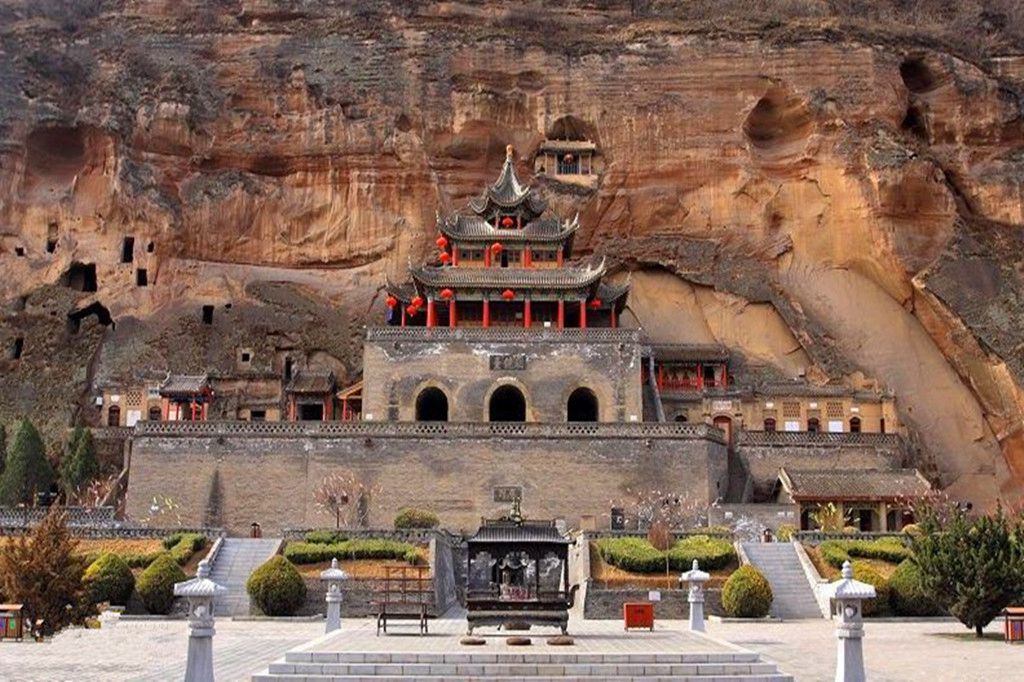
An Essential Guide to Visiting Great Buddha Temple Grottoes In Bin County
In This Guide
- An Essential Guide to Visiting Great Buddha Temple Grottoes In Bin County
- The Rich History and Legends of Great Buddha Temple Grottoes In Bin County
- Main Highlights: What You Absolutely Can’t Miss
- Planning Your Visit: A Practical Guide
- Tickets: Prices, Booking, and Tips
- How to Get There: A Complete Transportation Guide
- Local Cuisine and Accommodation Nearby
- Frequently Asked Questions
- Final Thoughts on Your Trip
Nestled within the serene landscape of Bin County, Shaanxi Province, the Great Buddha Temple Grottoes (彬县大佛寺石窟) offer a mesmerizing glimpse into China’s rich spiritual heritage and artistic ingenuity. This remarkable site, often overshadowed by its more famous counterparts like the Leshan Giant Buddha, presents an intimate and awe-inspiring experience for travelers seeking to delve into the depths of Chinese history and culture.
As you approach the grottoes, your senses will be captivated by the majestic mountain cliffs that cradle the temple complex, providing a dramatic backdrop for the monumental sculptures housed within. The centerpiece is the colossal Buddha statue, which resides in a cavern that can only be viewed through three carefully crafted openings in the main structure. Flanking the Buddha are two equally impressive Guanyin statues, embodying compassion and mercy, which further enhance the spiritual ambiance of this sacred site.

Great_Buddha_Temple_Grottoes_In_Bin_County.
While the journey to the Great Buddha Temple Grottoes may involve navigating through winding roads and deciphering local signage, the reward is well worth the effort. Visitors often find themselves in a tranquil environment, far removed from the bustling tourist crowds, allowing for a more personal connection with the art and history that permeates the grottoes. Whether you are a dedicated history buff, an art enthusiast, or simply someone in search of peace and reflection, the Great Buddha Temple Grottoes promise an unforgettable experience that will resonate long after your visit.
Prepare to embark on a journey through time and spirituality, where every carving tells a story, and every moment spent here becomes a cherished memory.
The Rich History and Legends of Great Buddha Temple Grottoes In Bin County
Unveiling the Legends and History of the Great Buddha Temple Grottoes in Bin County
Nestled in the breathtaking landscapes of Bin County, the Great Buddha Temple Grottoes (彬县大佛寺石窟) stand as a testament to China’s rich historical tapestry and profound spiritual traditions. This remarkable site, often overshadowed by its more famous counterparts, offers visitors a glimpse into the artistry and devotion of ancient Chinese cultures.
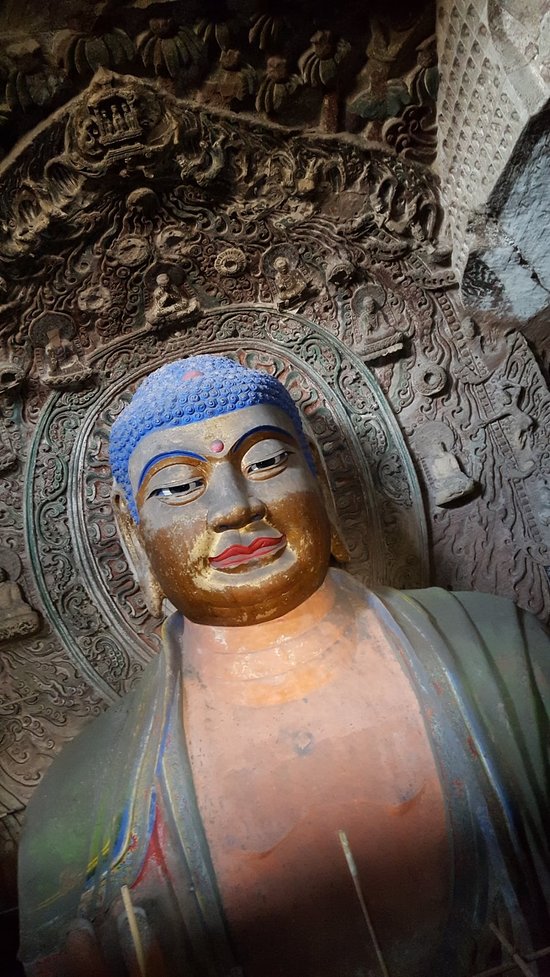
Great_Buddha_Temple_Grottoes_In_Bin_County.
Historical Context
The origins of the Great Buddha Temple Grottoes date back to the Tang Dynasty (618-907 AD), a period renowned for its cultural flourishing and artistic achievement. As Buddhism spread throughout China, it left an indelible mark on local architecture and religious practices. The grottoes at Bin County were carved into the natural rock face, allowing the temple to seamlessly blend with the surrounding mountainous terrain.
The central feature of this site is the colossal statue of the Buddha, which is housed within a cave. This impressive figure, flanked by two Avalokiteshvara (Guanyin) statues, embodies the spiritual aspirations of the period and reflects the artistic styles prevalent during its creation. The craftsmanship displayed in the carvings and sculptures is indicative of the high level of skill possessed by artisans of the time.

Great_Buddha_Temple_Grottoes_In_Bin_County.
Architectural Marvel
The temple complex is not just a series of caves; it is an architectural marvel that hugs the mountainous cliffs, creating a dramatic and serene atmosphere. Visitors enter through three openings in the main structure, offering unique perspectives of the towering Buddha within. The play of light and shadow in the cave enhances the spiritual ambiance, inviting contemplation and reverence.
Legends and Folklore
As with many historical sites in China, the Great Buddha Temple Grottoes are steeped in legends that add to their mystique. One popular tale recounts how a wandering monk, upon discovering the site, was so moved by the natural beauty and tranquility that he decided to carve the Buddha statue as an offering to express his gratitude. This story highlights the deep connection between nature and spirituality that is prevalent in Chinese culture.
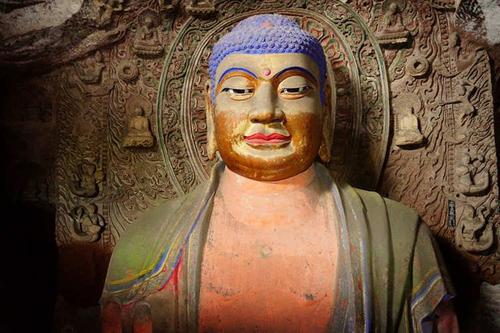
Great_Buddha_Temple_Grottoes_In_Bin_County.
Another legend speaks of the protective spirit of the mountain, believed to guard the grottoes against desecration and to bless visitors with peace and enlightenment. Locals often recount experiences of finding solace and clarity while visiting, attributing their feelings to the presence of this benevolent spirit.
A Hidden Gem for Travelers
Unlike the more famous Leshan Giant Buddha, the Great Buddha Temple Grottoes remain relatively undiscovered by mass tourism, making them an ideal destination for those seeking a more authentic experience. The site offers a tranquil escape, allowing visitors to immerse themselves in the serene environment and reflect on the historical significance of this ancient temple.
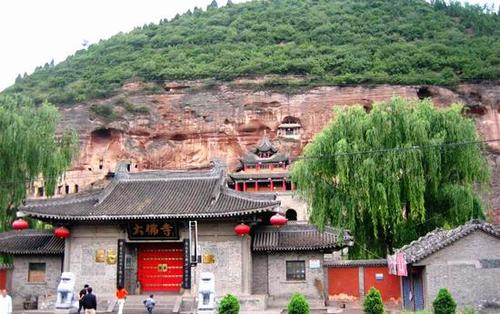
Great_Buddha_Temple_Grottoes_In_Bin_County.
Conclusion
The Great Buddha Temple Grottoes in Bin County are more than just a collection of caves; they are a vibrant expression of China’s historical and cultural heritage. From their origins in the Tang Dynasty to the legends that surround them, these grottoes invite travelers to explore the depths of Chinese spirituality and artistry. Whether you are a history enthusiast, a lover of art, or simply in search of a peaceful retreat, the Great Buddha Temple Grottoes promise an enriching experience that resonates long after your visit.
Main Highlights: What You Absolutely Can’t Miss
Discovering the Grandeur of the Great Buddha Temple Grottoes in Bin County
Nestled against the dramatic cliffs of Bin County, the Great Buddha Temple Grottoes (彬县大佛寺石窟) offer a captivating glimpse into China’s rich spiritual and artistic heritage. This lesser-known gem, often overshadowed by its more famous counterparts, promises an unforgettable experience for those willing to venture off the beaten path.
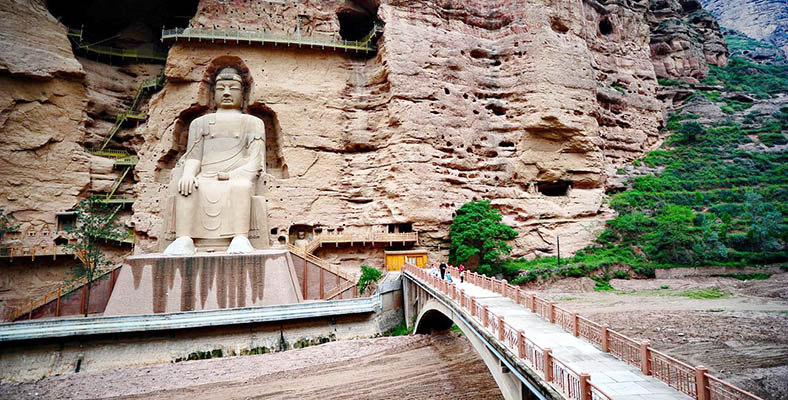
Great_Buddha_Temple_Grottoes_In_Bin_County.
1. The Majestic Cave Buddha
At the heart of the grottoes lies the breathtaking Cave Buddha, a monumental statue that commands attention. Unlike the towering Leshan Giant Buddha, this statue is renowned for its intricate craftsmanship and serene expression. Visitors can view the Buddha through three carefully designed openings in the main temple structure, allowing for a unique perspective on this ancient masterpiece. Flanked by two equally impressive Guanyin statues, the entire scene evokes a sense of tranquility and reverence.
2. The Enigmatic Setting
What makes the Great Buddha Temple truly special is its dramatic setting. The temple complex is built into the mountainside, with the natural rock formations enhancing the spiritual ambiance of the site. As you explore the area, take a moment to appreciate the harmonious blend of man-made artistry and nature’s wonders. The serenity of the surroundings makes it an ideal spot for reflection and contemplation.
3. Rich Cultural History
The Great Buddha Temple is not just an architectural marvel; it also serves as a testament to the rich Buddhist history in the region. Dating back to the Tang Dynasty, this site has been a place of worship and pilgrimage for centuries. As you wander through the grottoes, you can almost feel the echoes of the past, with ancient inscriptions and relics that tell the story of Buddhism’s evolution in China.
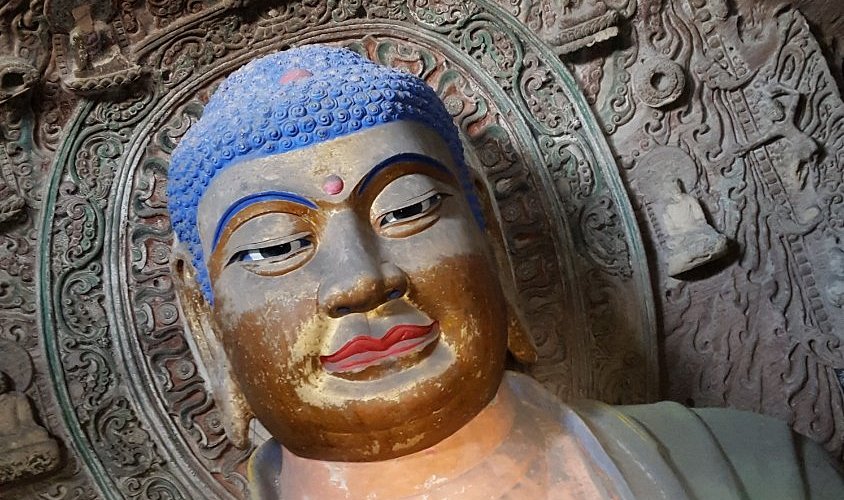
Great_Buddha_Temple_Grottoes_In_Bin_County.
4. A Journey Worth Taking
Reaching the Great Buddha Temple may require some navigation skills, as it is not as easily accessible as more popular tourist sites. However, the journey is part of the adventure. Follow the signs for “Dafosi” (大佛寺) to find your way. Many travelers have noted that the experience is well worth the effort, offering a more intimate and less crowded atmosphere than other famous Buddhist sites.
5. Practical Information
- Location: West of Bin County, approximately 11 km from the town center.
- Opening Hours: Daily from 8:00 AM to 6:00 PM.
- Entry Fee: The cost is quite reasonable, making it an affordable excursion for families and solo travelers alike.
- Nearby Attractions: After visiting the grottoes, consider stopping by the Kaiyuan Temple, another historical site that reflects the region’s rich cultural tapestry.
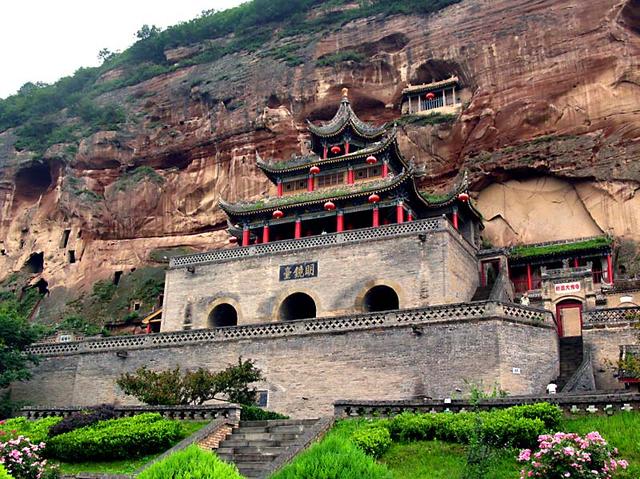
Great_Buddha_Temple_Grottoes_In_Bin_County.
Conclusion
For international travelers seeking an authentic experience of Chinese history and culture, the Great Buddha Temple Grottoes in Bin County are an absolute must-visit. With their awe-inspiring artwork, tranquil setting, and deep historical significance, this hidden treasure offers a unique opportunity to connect with the spiritual essence of China. Don’t miss the chance to explore this remarkable site—the memories you create here will undoubtedly last a lifetime.
Planning Your Visit: A Practical Guide
Your Essential Guide to Visiting the Great Buddha Temple Grottoes in Bin County
Nestled in the picturesque landscapes of Shaanxi Province, the Great Buddha Temple Grottoes in Bin County (彬县大佛寺石窟) is a must-visit destination for travelers intrigued by China’s rich history and cultural heritage. This guide will help you plan your visit, ensuring a memorable experience at this remarkable site.
Getting There
Location:
The Great Buddha Temple is situated approximately 11 kilometers west of Bin County, making it accessible by car or public transportation.
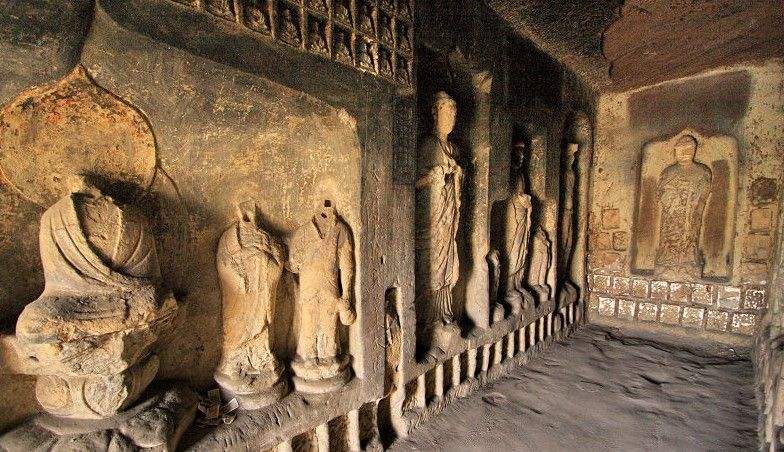
Great_Buddha_Temple_Grottoes_In_Bin_County.
Directions:
– If you are driving from Xi’an, take the G70 highway towards Bin County. Keep an eye out for signs leading to “Dafosi,” which is the local name for the Great Buddha Temple.
– Transportation options from Xi’an include buses and taxis, but ensure you confirm the route with the driver since English may not be widely spoken.
Opening Hours
The temple is open daily from 8:00 AM to 6:00 PM. Arriving early in the day allows you to enjoy a quieter atmosphere and better lighting for photography.
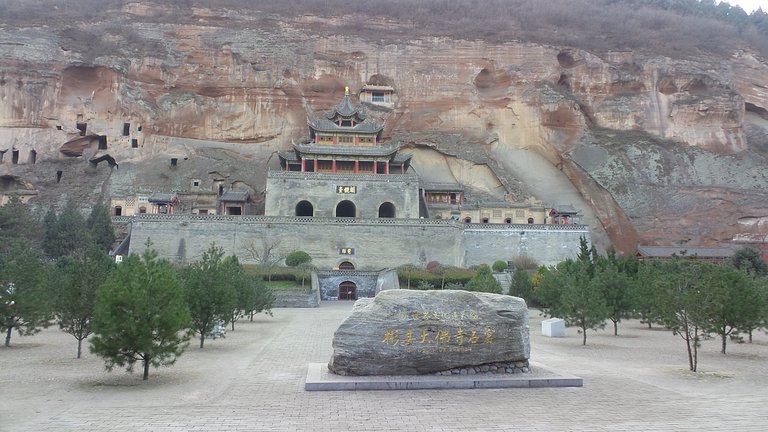
Great_Buddha_Temple_Grottoes_In_Bin_County.
Entry Fees
A modest entry fee grants you access to the temple complex. Prices may vary, so it’s advisable to check locally before your visit.
What to Expect
Temple Complex:
Upon entering, you will be greeted by a stunning temple that hugs the side of a majestic mountain cliff. The highlight of your visit will undoubtedly be the colossal Buddha statue housed within a cave, visible through three openings in the main building. Flanking the Buddha are two impressive Guanyin statues, offering a serene ambiance.
Renovation Notice:
Be aware that some areas of the temple may be under renovation. This could affect the visibility of certain statues, but it also reflects ongoing efforts to preserve this historical site.
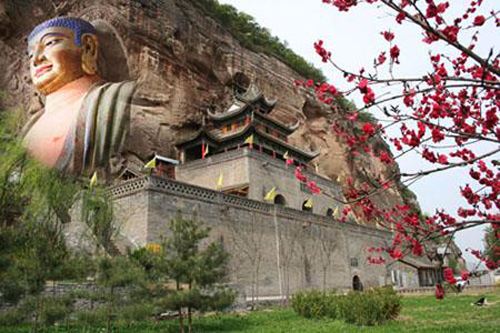
Great_Buddha_Temple_Grottoes_In_Bin_County.
Nearby Attractions
While the Great Buddha Temple is the main draw, you can enhance your visit by exploring nearby attractions:
– Kaiyuan Si Pagoda: A short drive away, this ancient pagoda offers insights into the region’s religious architecture.
– Local Dining Options: Don’t miss trying local dishes at nearby restaurants. One popular choice is LaoMa Jia Niu Mutton PaoMo, known for its flavorful mutton dishes.
Travel Tips
- Plan Your Visit: Given the remote location, ensure you have a plan for transportation back to your accommodation, as options may be limited in the evening.
- Language Considerations: English may not be widely spoken, so consider downloading a translation app or having a phrasebook handy.
- Photography: The natural beauty surrounding the temple is breathtaking. Bring your camera to capture the serene landscapes and intricate details of the architecture.
Final Thoughts
Visiting the Great Buddha Temple Grottoes is not just about seeing a magnificent statue; it’s an opportunity to immerse yourself in the tranquility and history of Chinese culture. With this guide, you’re well-prepared to explore this remarkable site and create lasting memories. Happy travels!
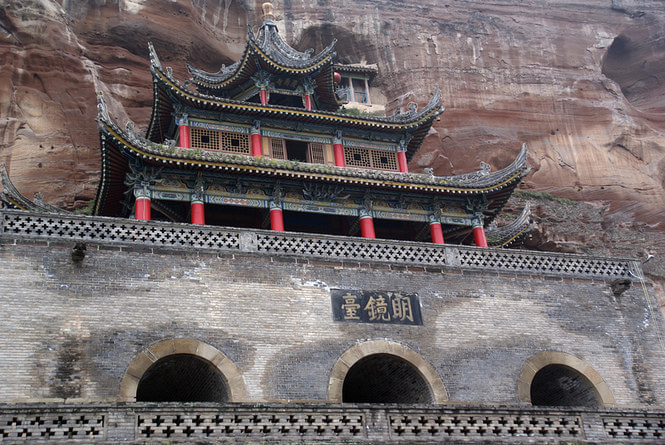
Great_Buddha_Temple_Grottoes_In_Bin_County.
Tickets: Prices, Booking, and Tips
Exploring the Great Buddha Temple Grottoes: Tickets, Booking, and Tips
Visiting the Great Buddha Temple Grottoes in Bin County offers an incredible opportunity to immerse yourself in China’s rich historical and cultural heritage. To ensure a captivating experience, here’s everything you need to know about tickets, booking, and tips for your visit.
Ticket Information
-
Entry Fee: The ticket price for the Great Buddha Temple is quite reasonable, making it accessible for all travelers. As of the latest updates, the entry fee is approximately CNY 30 (around USD 4.50), but it’s advisable to check for any changes prior to your visit.
-
Hours of Operation: The temple is open daily from 8:00 AM to 6:00 PM. Plan to arrive early to avoid the crowds and enjoy the site in a more tranquil atmosphere.
Booking Your Visit
-
Advance Booking: While tickets can typically be purchased on-site, consider booking in advance during peak tourist seasons to ensure availability. There are various online platforms that offer ticket reservations for attractions in China, including the Great Buddha Temple.
-
Getting There: The temple is located approximately 11 kilometers west of Bin County, making it relatively easy to reach by car or taxi. Look for the signs indicating “Dafosi” as this is the name most commonly used for the temple.
Tips for Your Visit
-
Navigation: The temple can be somewhat challenging to locate, particularly if you are relying solely on GPS. Keeping an eye out for local signage towards Dafosi will help guide you to the grottoes.
-
Best Time to Visit: To enjoy the beauty of the grottoes with fewer tourists, consider visiting during weekdays or early in the morning. This allows for a more serene experience as you explore the intricate carvings and serene atmosphere of the temple.
-
Weather Considerations: Depending on the season, temperatures may vary. If you’re visiting in the summer, be prepared for heat, and in winter, dress warmly as it can get quite chilly in the mountainous areas.
-
Bring Your Camera: The Great Buddha and surrounding grottoes provide stunning photo opportunities. With numerous statues and the impressive natural backdrop, you’ll want to capture these moments.
-
Local Cuisine: After your visit, consider stopping by a nearby restaurant to savor local Shaanxi cuisine. A popular option is LaoMa Jia Niu Mutton PaoMo, located just a short distance from the temple.
Conclusion
The Great Buddha Temple Grottoes in Bin County is a hidden gem that promises a unique glimpse into China’s spiritual heritage and artistic prowess. By preparing ahead with ticket information, booking tips, and local insights, your visit can be both enriching and unforgettable. Enjoy your journey into the heart of Chinese culture!
How to Get There: A Complete Transportation Guide
Getting to the Great Buddha Temple Grottoes in Bin County
Visiting the Great Buddha Temple Grottoes in Bin County (彬县大佛寺石窟) is a journey into the heart of Chinese history and spirituality. Nestled against a dramatic mountain backdrop, this site is home to an impressive cave temple complex featuring a magnificent Buddha statue, making for a profound cultural experience. However, reaching this historical treasure can be a bit challenging if you’re unfamiliar with the area. Here’s a comprehensive guide to help you navigate your way to this awe-inspiring destination.
1. Starting Point: Xianyang City
Most travelers will begin their journey from Xianyang, which is the nearest major city. Xianyang is conveniently located just about 150 kilometers (93 miles) from Bin County, making it a popular launching point.
Transportation Options from Xianyang:
- By Car:
- Driving: The most straightforward way to reach Bin County is by car. The drive will take approximately two hours via G5 and G70 expressways.
-
Rental Cars: Various rental services are available in Xianyang. Ensure you have a GPS or a reliable map application, as signage can be limited once you get closer to Bin County.
-
By Bus:
- Long-Distance Buses: Buses depart from the Xianyang Long-Distance Bus Station to Bin County regularly. The trip takes about two to three hours depending on traffic, and buses are a cost-effective and direct option.
- Tickets: Purchase tickets at the station or online through local travel apps. Make sure to check the bus schedule, as it may vary.
2. Navigating to the Temple
Once you arrive in Bin County, you’ll need to find your way to the Great Buddha Temple Grottoes, which can be slightly tricky due to the local signage.
-
Look for Local Signs: The temple is often referred to as Dafosi (大佛寺). Follow signs for Dafosi, as they will guide you accurately to the site. Be mindful that some travelers have reported confusion with other signs.
-
Ask Locals: If you’re having trouble, don’t hesitate to ask locals for directions. Bin County is not overly touristy, and residents are generally helpful.
3. Public Transportation Within Bin County
If you’re relying on public transport within Bin County, here are some tips:
-
Local Buses: Bin County has a network of local buses that can take you close to the temple. However, schedules may be infrequent, so check in advance.
-
Taxis or Ride-Sharing: Taxis are available, and ride-sharing apps like Didi (滴滴) can be convenient for getting directly to the temple from your accommodation.
4. Visiting Hours and Entry Fees
- Opening Hours: The Great Buddha Temple Grottoes are open daily from 8:00 AM to 6:00 PM. Plan your visit accordingly to make the most of your experience.
- Entry Fee: The entrance fee is quite reasonable, offering great value for a glimpse into this historical site.
5. Tips for a Smooth Journey
- Plan Ahead: Given the remote nature of the site, it’s advisable to plan your trip ahead of time, especially if you are visiting during peak seasons or holidays.
- Be Prepared for Limited Amenities: Aside from the temple, options for dining and shopping in the immediate area may be limited. Consider packing snacks and water for your visit.
- Check for Renovations: Before your trip, check for any updates regarding ongoing renovations or maintenance at the temple, as this may affect your visit.
Conclusion
The Great Buddha Temple Grottoes in Bin County is a hidden gem that promises a rewarding experience steeped in history and culture. With careful planning and the right transportation, you can enjoy a seamless journey to this remarkable site. Whether you’re a history buff, a spiritual seeker, or simply an avid traveler, the journey to the Great Buddha is one worth taking. Safe travels!
Local Cuisine and Accommodation Nearby
Discovering Local Flavors and Comfortable Stays Near the Great Buddha Temple Grottoes
When visiting the Great Buddha Temple Grottoes in Bin County, immersing yourself in the local culture and cuisine is as rewarding as exploring the ancient site itself. Here’s a guide to some delightful dining options and cozy accommodations that will enhance your travel experience in this culturally rich area.
Culinary Delights
LaoMa Jia Niu Mutton PaoMo
Just a short walk from the Great Buddha Temple, this local eatery is a must-visit for an authentic taste of Shaanxi cuisine. Known for its PaoMo, a traditional dish featuring bread soaked in mutton soup, this restaurant has garnered positive reviews for its hearty flavors and welcoming atmosphere. The tender mutton and rich broth make it a perfect meal after a day of exploration.
Local Street Food Stalls
As you wander around Bin County, be on the lookout for street vendors offering biangbiang noodles and roujiamo (Chinese hamburgers). These quick bites are not only delicious but also give you a taste of local life. The vibrant street food scene is a great way to connect with the community and experience the region’s culinary heritage.
Comfortable Accommodations
Bin County Hotel
Located conveniently near the Great Buddha Temple, this hotel offers a blend of comfort and convenience. With clean rooms and essential amenities, it serves as a great base for your explorations. The friendly staff can assist with local travel tips and recommendations, making your stay more enjoyable.
Xianyang Jinlong Hotel
A bit further afield, this hotel is known for its excellent service and modern facilities. Offering spacious rooms and a restaurant that serves both local and international dishes, it’s an ideal choice for travelers seeking comfort after a long day of sightseeing. Its proximity to the main road makes it easy to reach the Great Buddha Temple and other nearby attractions.
Final Thoughts
Whether you’re indulging in local delicacies or resting in comfortable accommodations, your visit to the Great Buddha Temple Grottoes in Bin County will be enriched by these experiences. Embrace the flavors of Shaanxi and the warmth of its hospitality as you explore one of China’s hidden gems.
Frequently Asked Questions
Common Questions About the Great Buddha Temple Grottoes in Bin County
1. What is the Great Buddha Temple Grottoes?
The Great Buddha Temple Grottoes, also known as Dafosi, is a historical site located in Bin County, Shaanxi Province. This remarkable temple complex features a large Buddha statue housed within a cave, framed by two Guanyin statues, and offers an impressive glimpse into the region’s rich Buddhist heritage.
2. How do I get to the Great Buddha Temple?
To reach the Great Buddha Temple, follow the signs for “Dafosi” once you arrive in Bin County. Although some travelers have reported difficulty finding the site, paying attention to local signage will guide you there. The temple is approximately 11 km west of Bin County.
3. What are the opening hours?
The Great Buddha Temple is open to visitors from 8:00 AM to 6:00 PM daily. It is advisable to plan your visit accordingly to make the most of your time exploring this historical site.
4. Is there an admission fee?
Yes, there is a nominal entry fee to visit the Great Buddha Temple. While specific pricing can vary, it is generally considered affordable. Check locally for the most current information upon your arrival.
5. What should I expect when visiting the site?
Visitors can explore the cave housing the massive Buddha statue and appreciate the intricate carvings and sculptures adorning the temple complex. Be prepared for a serene atmosphere, as it is often less crowded than other major attractions, allowing for a peaceful experience.
6. Are there any nearby attractions?
Yes! In addition to the Great Buddha Temple, nearby attractions include the Kaiyuan Si Pagoda and various natural landscapes perfect for hiking. It’s worth spending some time in the area to appreciate both the historical and natural beauty of Bin County.
7. What is the best time to visit the Great Buddha Temple?
The ideal time to visit is during spring (April to June) or fall (September to November) when the weather is mild. However, if you enjoy fewer crowds, consider visiting during off-peak seasons, though be aware that some facilities may have limited services.
8. Are there dining options nearby?
Yes, there are several local dining options within a short distance from the Great Buddha Temple. One recommended spot is LaoMa Jia Niu Mutton PaoMo, where you can savor traditional Shaanxi dishes. Plan to enjoy a meal to complete your cultural experience in the area.
By preparing for your visit with this information, you’ll be well-equipped to enjoy the historical and spiritual significance of the Great Buddha Temple Grottoes in Bin County!
Final Thoughts on Your Trip
As your journey to the Great Buddha Temple Grottoes in Bin County comes to a close, take a moment to reflect on the profound experience you’ve just had. Nestled against a stunning mountain backdrop, this hidden gem offers not only a glimpse into China’s rich spiritual heritage but also a connection to the timeless artistry that has flourished here for centuries.
A Unique Cultural Encounter
Visiting the grottoes, you have walked in the footsteps of countless pilgrims and travelers who have marveled at the grandeur of the seated Buddha and the serene Guanyin statues that flank it. The artistry of the cave carvings speaks of a dedication to craftsmanship that is rarely seen today. Despite the challenges in locating this treasure, the journey itself is part of the adventure, revealing the beauty of rural China and the warmth of its culture.
Tips for Future Explorers
- Plan Your Visit: The temple is open daily from 8:00 AM to 6:00 PM, so consider arriving early to enjoy the serene atmosphere before the crowds.
- Follow the Signs: To avoid confusion, look for signs leading to “Dafosi,” the local name for the temple.
- Embrace the Journey: The long drive is compensated by the tranquility and charm of Bin County, making it a worthwhile excursion for those seeking to delve deeper into China’s spiritual and historical landscapes.
Final Reflection
As you leave the Great Buddha Temple Grottoes, carry with you the tranquility and reverence that this sacred site inspires. Whether you are an avid historian, a spiritual seeker, or simply a curious traveler, Bin County offers a unique chapter in your exploration of China’s cultural tapestry. May your travels continue to be filled with discovery and inspiration!